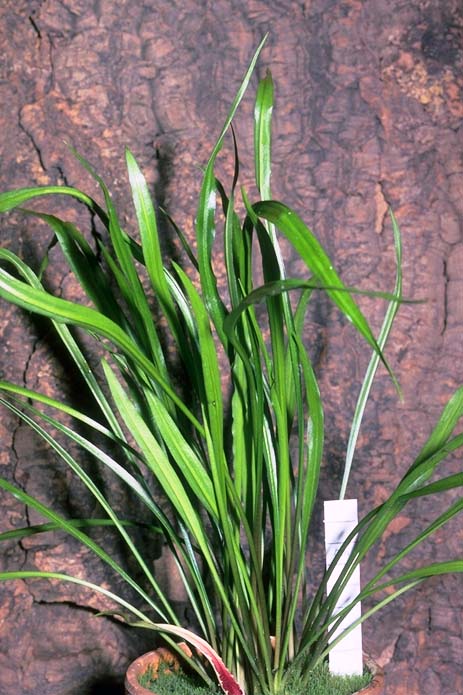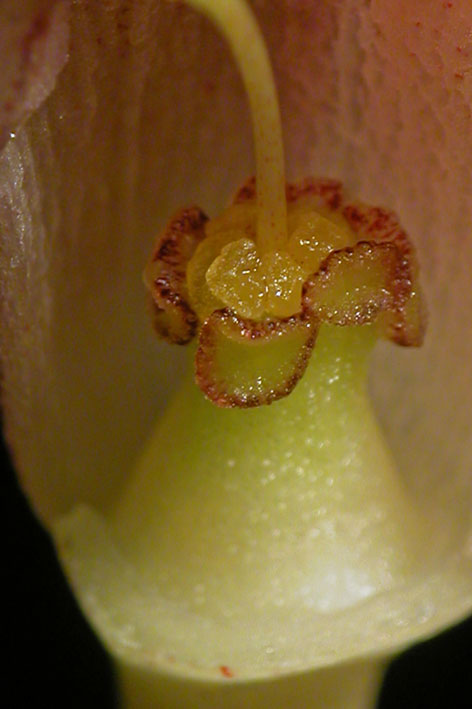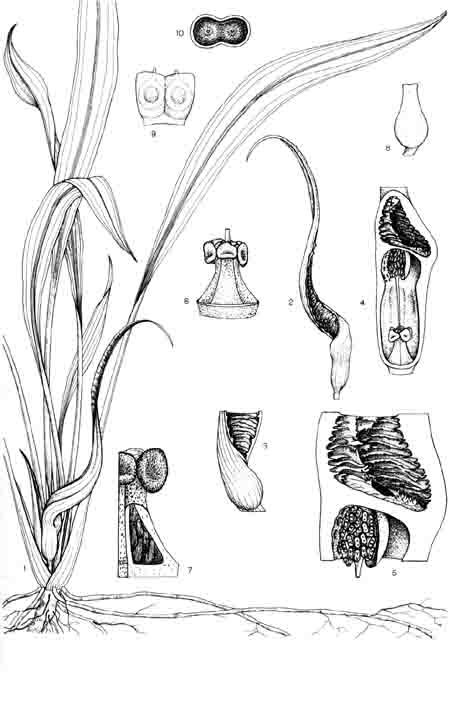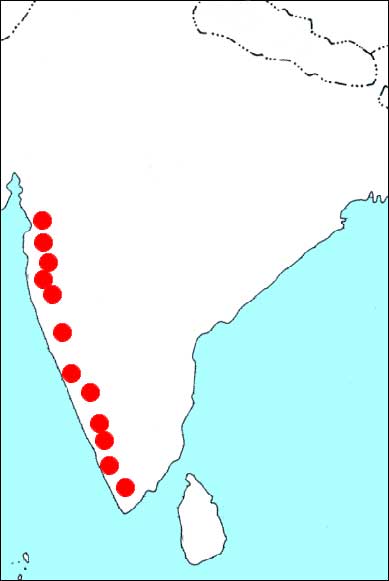 |
A huge patch of C. spiralis var. spiralis.
photo te Beest |
|
 |
C. spiralis var. spiralis is a weed in Kerala, growing in a dry meadow after the rice harvest, apparently not preferred by the cattle.
photo Bogner
|
|
 |
Uprooted plants from the meadow in Kerala, it looks that they propagate by divisions of the rhizome and not by runners.
photo Bogner |
|
 |
Variation in spathe's of C. spiralis var. spiralis from that one locality in Kerala. Note that the kettle is always below the surface (the white part).
photo Bogner
|
|
| |
|
|
|
 |
C. spiralis var. spiralis can propagate by
division of the rhizome. In this way there grow big stands of plants. Note the tip of the
spathe.
coll. unknown., cult. B 603
|
|
 |
The leaves can have a brown margin or can be
full brown. The margin is sometimes slight undulated.
coll. unknown, cult. B 116
|
|
 |
The spathe puts only the limb out of the soil.
The margins of the limb are strong denticulate. The limb varies in colour from red to
yellow and often has pronounced transverse rims.
coll. Cook s.n., cult. B 1165
|
|
 |
Aquarium culture of C. spiralis var. spiralis. Broad undulated leaves, up to 50 cm, younger leaves brownish.This plant can fill a 130 cm aquarium in one year by making long runners
coll. unknown, cult. B554
|
|
| |
|
|
|
 |
A very old aquarium strain with narrow leaves up to 1 m which looks exactly like a C. crispatula var. flaccidifolia but finally
|
|
 |
... turned out to be a C. spiralis var. spiralis when grown emerged. Leaves ca. 30 cm.
coll. unknown, cult B 20
|
|
 |
A rather 'common' formed spathe.
unknown coll., cult. B 116
|
|
 |
A short limb of the spathe with a yellow top.
unknown coll., cult. B 636
|
|
| |
|
|
|
 |
Only the limb is visible, the kettle is always deep buried in the soil.
coll. Cook, cult. B 1165
|
|
 |
Typical for C. spiralis are the transverse ribs on the limb and the warty outgrowths on the margin....
coll. Cook, cult B 554
|
|
 |
... however it may be much less expressed in other plants.
coll. FW-I08-C02, cult B1209
|
|
 |
A narrow leaved plant with a strongly twisted limb.
coll. FW I08-C02, cult B 1209
|
|
| |
|
|
|
 |
The inside colour of the kettle varies from white
to deep red in the upper part.
coll. Cook, cult. B1165.
|
|
 |
The septum just above the male flowers has a
narrow circular hole.
coll. FW I08-C02, cult. B1209
|
|
 |
The septum seen from above (the limb of the spathe is cut).
coll. FW I08-C02, cult. B1209
|
|
 |
The stigma's are typical for C. spiralis var. spiralis.
coll. unknown, cult. B 116
|
|
| |
|
|
|
 |
This narrow leaved C. spiralis var. spiralis propagates by runners.Note the strong contractible roots
coll. FW-I08-C02, cult B1209
|
|
 |
Herbariumsheet (M) with a rather broad leaved plant.
coll. Patil 0333
photo Hoeck
|
|
 |
Drawing in de Wit (1990) of C. spiralis var. spiralis
coll.hort.!
drawing Ike Zewald
|
|
 |
Distribution of C. spiralis var. spiralis
|
|
| |
|
|
|
Cryptocoryne spiralis var. spiralis is a rather easy to cultivate plant with perhaps one
withdrawal, it propagates mostly very slowly. There are however forms that do well and
these are better suited for the aquarium. In emerged culture it tolerates rather dry air and full sun, so you can cultivate these plants in an open pot at your window.
Updated December 2013 |
Literature. see the spiralis group |
|